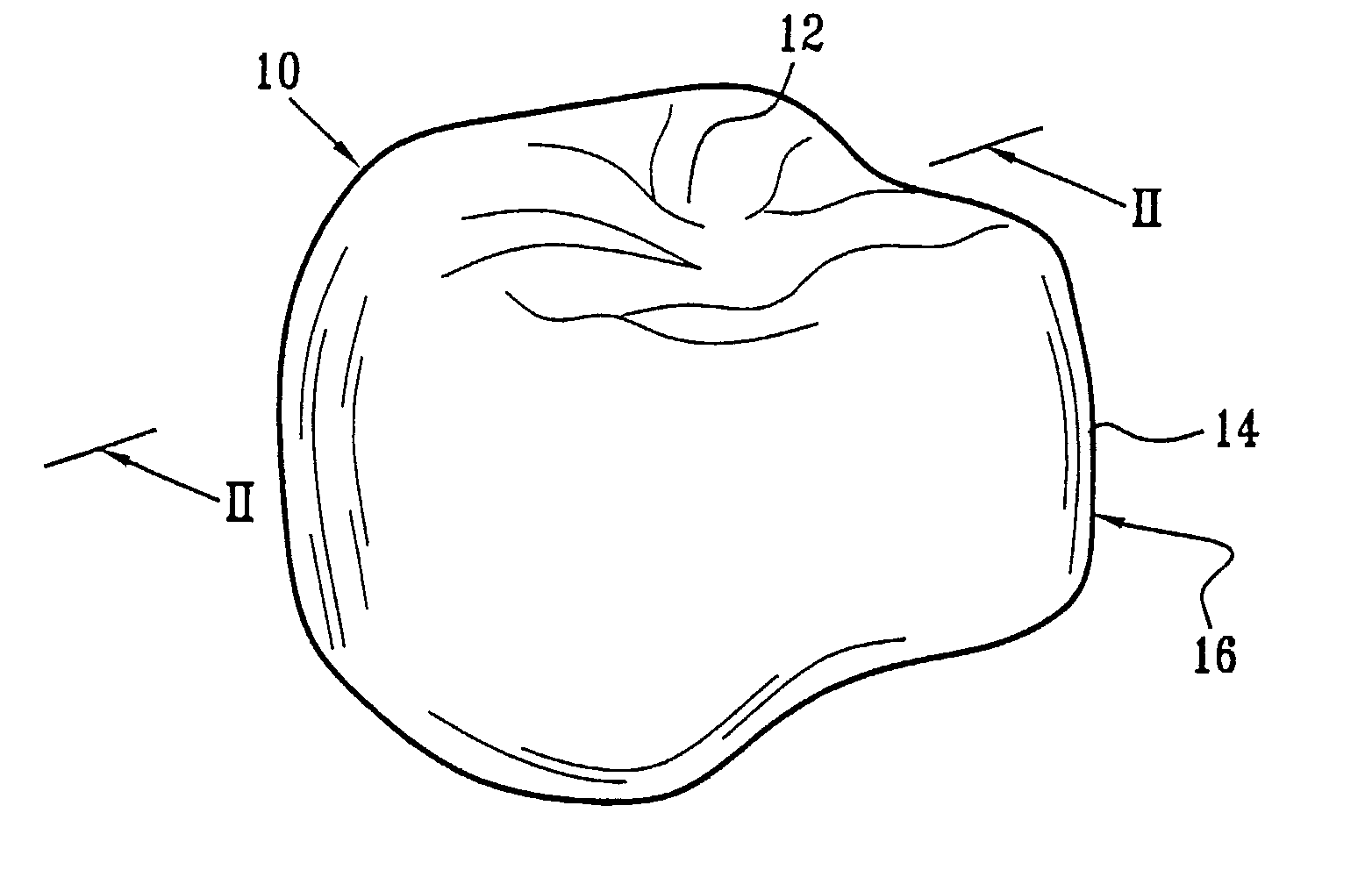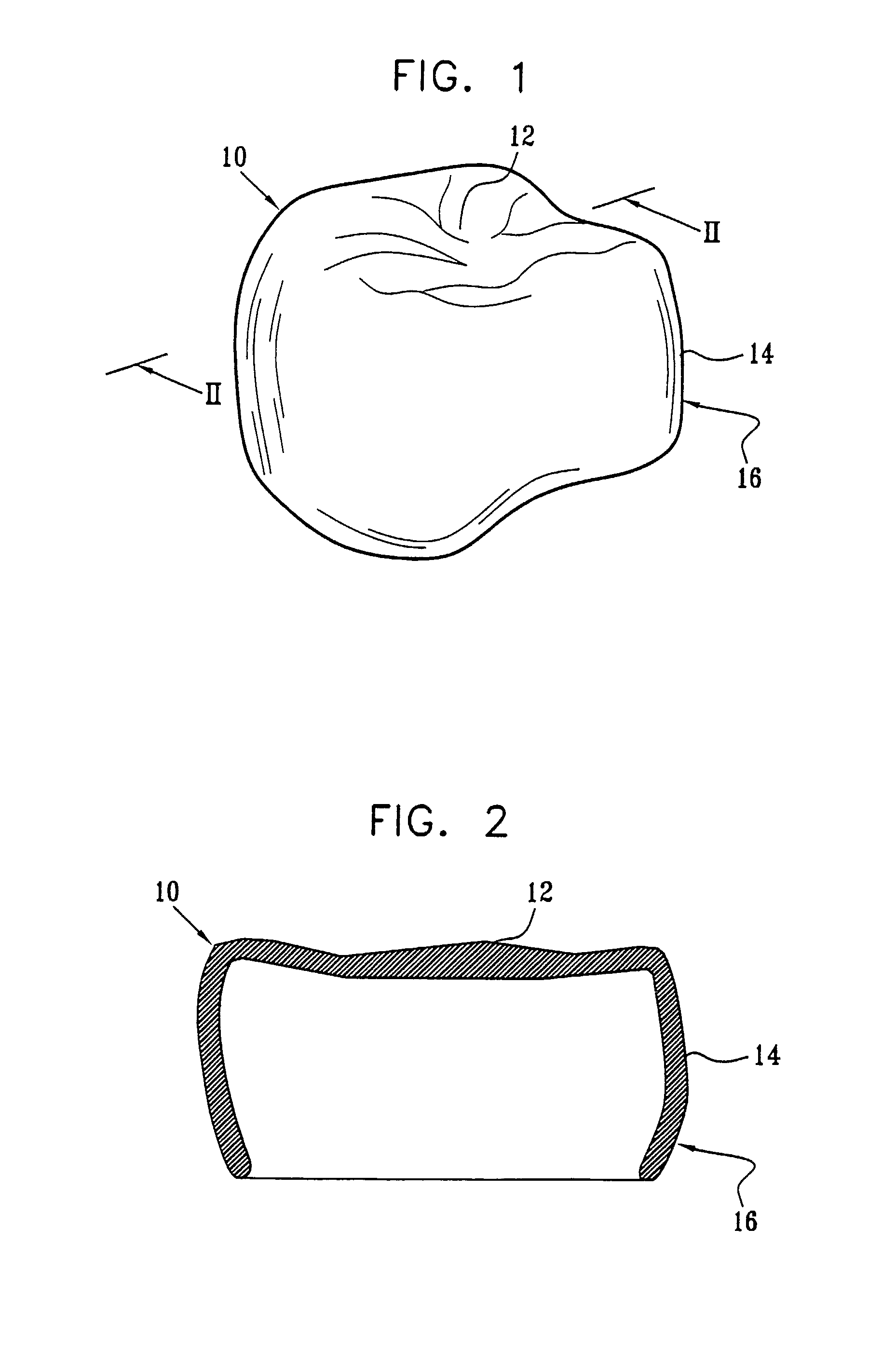Dental crowns
a permanent crown and dental technology, applied in the field of tooth prosthesis, can solve the problems of large inventories of shapes and sizes, loss of teeth, and high cost of ceramics to machine, and achieve the effect of preventing tooth loss and preventing tooth loss
- Summary
- Abstract
- Description
- Claims
- Application Information
AI Technical Summary
Benefits of technology
Problems solved by technology
Method used
Image
Examples
Embodiment Construction
[0030]Reference is now made to FIG. 1, which is a simplified pictorial illustration of a dental crown formed of acetal homopolymer resin and to FIG. 2, which is a sectional illustration of the dental crown of FIG. 1, taken along lines II-II in FIG. 1.
[0031]As seen in FIGS. 1 and 2, there is provided in accordance with a preferred embodiment of the present invention prefabricated dental crown 10 comprising single-layer structure (i.e. one integral piece). The crown 10 is configured to have excellent dimensional stability and sufficient resilience (elasticity / flexibility and shape memory) and resistance to creep (force of mastication). Also, the crown's configuration is selected to provide the natural appearance of a vital tooth. Thus, the dimensions (thickness) and material(s) of the crown are selected to provide the desired resilience of the crown, namely ability to absorb energy when it is deformed elastically and then, upon unloading to have this energy recovered, or in other word...
PUM
| Property | Measurement | Unit |
|---|---|---|
| thickness | aaaaa | aaaaa |
| thickness | aaaaa | aaaaa |
| masticatory forces | aaaaa | aaaaa |
Abstract
Description
Claims
Application Information
 Login to View More
Login to View More - R&D
- Intellectual Property
- Life Sciences
- Materials
- Tech Scout
- Unparalleled Data Quality
- Higher Quality Content
- 60% Fewer Hallucinations
Browse by: Latest US Patents, China's latest patents, Technical Efficacy Thesaurus, Application Domain, Technology Topic, Popular Technical Reports.
© 2025 PatSnap. All rights reserved.Legal|Privacy policy|Modern Slavery Act Transparency Statement|Sitemap|About US| Contact US: help@patsnap.com



